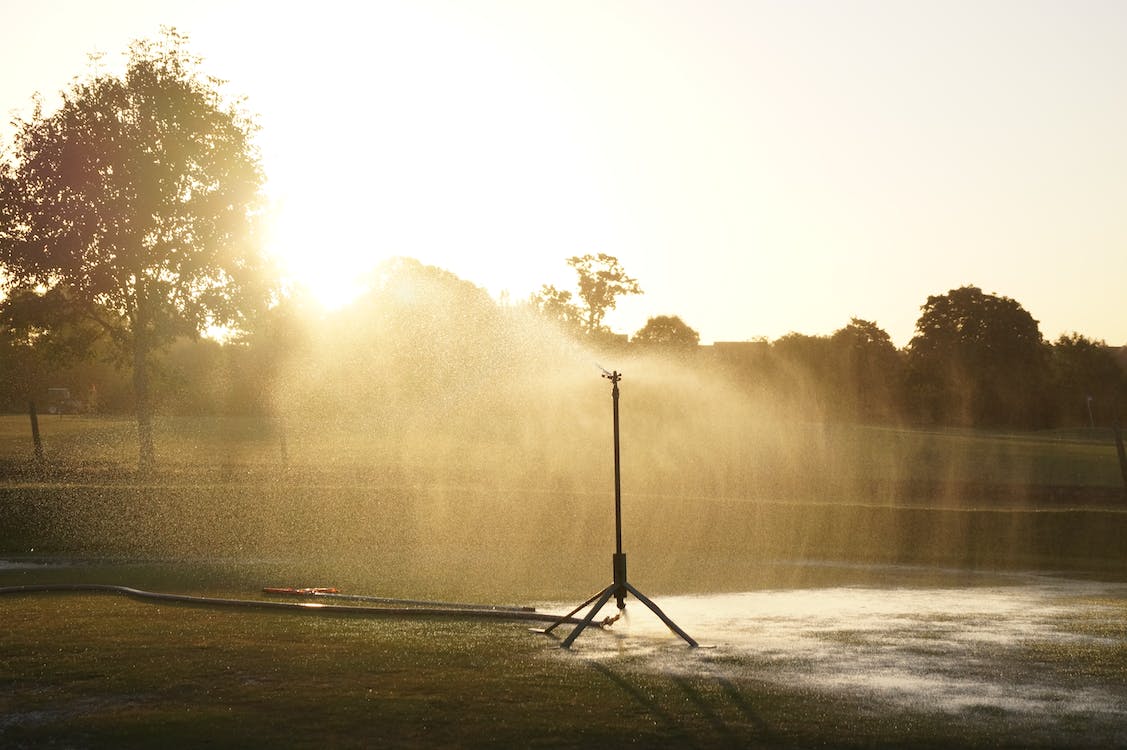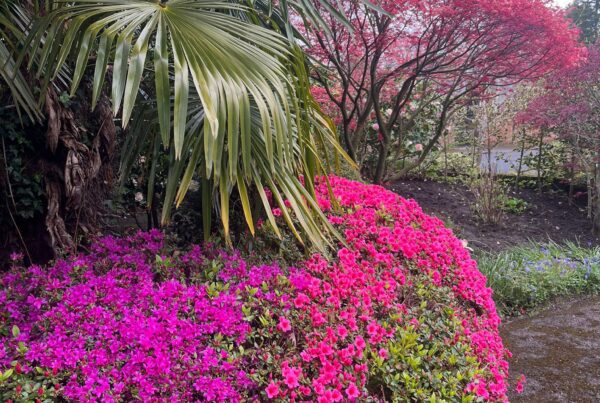Are you tired of seeing a dull, dry and lifeless lawn?
Do you dream of a lush, vibrant lawn that will make your outdoor space more inviting?
If yes, you are not alone.
Many garden enthusiasts want a manicured lawn that adds charm and appeal to their property.
A beautiful lawn creates a welcoming environment, a place to relax, play and enjoy being outdoors.
If you were to ask any lawn enthusiasts what their ideal grass would look like they would probably say a bowling green, or Wimbledon!
When in reality, many people are dealing with dead or mottled grass and this can be frustrating and discouraging.
Luckily, there are steps you can take to revamp your grass and get that green carpet of healthy lawn that everyone craves.
From proper watering techniques to effective lawn care, discover the secrets to keeping your lawn thriving and bringing joy to your home.
Say goodbye to withered grass and get ready to welcome the beauty of vibrant, wimbledon-esque grass into your life!
First, lets delve into the common question;
Does watering grass in the sun burn it?

A lot of people water their lawns in the sun and think nothing of it.
However it is a common concern for some homeowners and gardeners;
So, Is watering grass in the sun bad?
Lets try to understand the facts.
The idea that watering grass in direct sunlight will cause burns is actually a myth.
Although the sun itself doesn’t burn grass, watering in the sun has certain factors that can affect the health of your grass.
Timing plays an important role in watering your lawn.
Watering during the hours when the sun is at its hottest is not recommended.
Water droplets can act like a magnifying glass, magnifying sunlight and potentially damaging blades of grass.
It is best to avoid watering during this peak times of the day.
The best time to water your lawn is early morning or late afternoon when the sun is less intense.
This allows the water to penetrate the soil and be absorbed by the grass roots before evaporating.
Watering at this time will encourage roots to grow healthier and deeper.
Not only the timing of watering, but also the frequency of watering is important.
Instead of watering your lawn for a short amount of time each day, it’s better to water it deeply and often.
This allows the grass roots to dig deeper into the soil, making it more resilient and able to withstand periods of drought and heat stress.
When watering your luscious grass, make sure the water reaches the soil and doesn’t just sit on the stem.
Sprinklers and irrigation systems that distribute water close to the ground can minimize water loss through evaporation. These irrigation systems ensure that the soil gets fully saturated and not just the grass, holding moisture for longer.
Keep in mind that other environmental factors can also affect the health of grass.
High temperatures, lack of proper nutrients, compacted soils, and poor drainage can all lead to stress on your lawn.
Considering these factors is essential to maintaining a healthy and vibrant lawn.
By watering your grass at the right time and at the right frequency, making sure the water reaches the soil, you can keep your lawn healthy and green all year round.
Remember, the goal is to support deep, resilient root growth, which ultimately produces a beautiful, lush grass.
So hopefully this has answered you’re question of ‘does water grass in the sun burn it?’
What is the best time of day to water your lawn?
There isn’t necessarily a one-size-fits-all answer here, but there are general guidelines which I like to follow.
An important factor to remember is that watering during the hottest part of the day is generally not recommended.
I wont go into this again, as I’ve already written about this above.
However, watering early in the morning has several advantages.
The air tends to be cooler and the winds are milder, which means better moisture absorption and less evaporation.
Also, the grass has enough time to dry out before nightfall, which helps prevent fungal diseases.
Another viable option is to water in the early morning or early evening.
Temperatures are usually cooler, allowing the grass to absorb water at night.
But be careful not to get too close to sunset, as wet grass at night can increase the risk of fungus overgrowth.
When deciding the best time to water your lawn, it’s important to consider your local climate and weather conditions. For example, in hot, dry areas, early morning watering can help rehydrate before the scorching heat sets in.
In areas with high humidity, late afternoon watering may be preferable so that the grass dries out before nightfall.
Remember that consistency is key when watering your lawn. Water your lawn regularly, whether it’s in the morning or late afternoon, to promote healthy root growth and overall lawn vitality.
Also, be aware of water restrictions and guidelines in your area. If there’s a hosepipe ban in your area some places can impose heavy fines.
By understanding the importance of timing and adjusting it for your specific climate and lawn conditions, you can maximize the effectiveness of your irrigation and grow a perfect lawn.
What other factors contribute to dying grass?
There’s nothing worse than spending copious amounts of time trying to get the perfect lawn, only to come out one morning and see parts of it dying off.
Whilst you’re right to be concerned, don’t be!
Here we’ll look into some of the common reasons your grass might be dying and see if we can help you maintain a healthy lawn, or in some cases – revive it.
Inadequate watering
One of the leading causes for any dying lawn is simply lack of water.
However, overwatering can also damage your lawn!
When the grass is under watered, the grass will appear yellow, dry, weak and breaks away when you touch it.
A sign of being over watered is things like fungal diseases, this can also occur when the roots have been suffocated.
To keep your grass healthy, you should aim for a happy medium – try not to over water the grass or underwater it.
Infrequent deep watering works best, the best time to water your lawn is early morning to allow your grass to dry.
Of course, before you do water, check the weather forecast and water accordingly.
Poor soil quality
Poor soil that lacks all the necessary nutrients may weaken the grass and leave it open to diseases and pests, healthy grass craves healthy, fertile soil to survive and go on to live its best life.
Make sure your soil isn’t too compact, as this will prevent proper water absorption and could lead to dying grass patches.
If you think this is the case with your lawn, you can aerate the lawn yourself using an aerator.
This can either be a manual aerator or a mechanical one. This will help reduce lawn compaction and promote root development.
Don’t forget your compost, as this is a quick way to enhance the soils nutrition content!
Fertilize
Phosphorous, Nitrogen, and Potassium are the three main ingredients needed for healthy grass development.
Carrying out a soil test (you can order these online) will tell you your lawns nutrient levels. Based on these test results, purchase the right fertilizer for your soil and off you go!
Environment
There’s many environmental factors to take into account when looking after your grass.
Excessive heat, extreme frost, people using it as a footpath/walkthrough etc.
While you cant guess what the weather is going to be, you can however put in some preventative measures to protect your grass.
For example, if there is a certain part of your lawn that sits in the sun all day and always ends up dying, try and strategically plant a tree that will act as a shade spot for that part of the grass.
If the grass has worn over time, from people walking over it, why not replace the dead grass with a footpath? Keeping people off your beloved grass.

Determine how much water your grass needs
Ideally, you want to make sure you’ve watered all the way down to the bottom of the roots, but not to over-hydrated the grass at the same time.
Generally, grass roots go down about 6 inches,
Most healthy lawns require around 1 inch of rainfall per week. To see how hydrated your lawn is, grab yourself a screwdriver.
Take the screwdriver and stick it in the soil. If the screwdriver easily penetrates the soil to around 6 inches, like a knife through butter; this is a sign the soil is hydrated!
However, if you stick the screwdriver in and the grounds solid…It’s a sign that the soil is dry and that your grass will need watering,
The question ‘is watering grass in the sun bad?’ isn’t quite that black and white. Hopefully now you’ve got a better idea of how and when to water your grass.
And a better idea of what to do if your lawn starts dying.
If you have any other questions, or would like us to write an article on something else, feel free to contact us.




